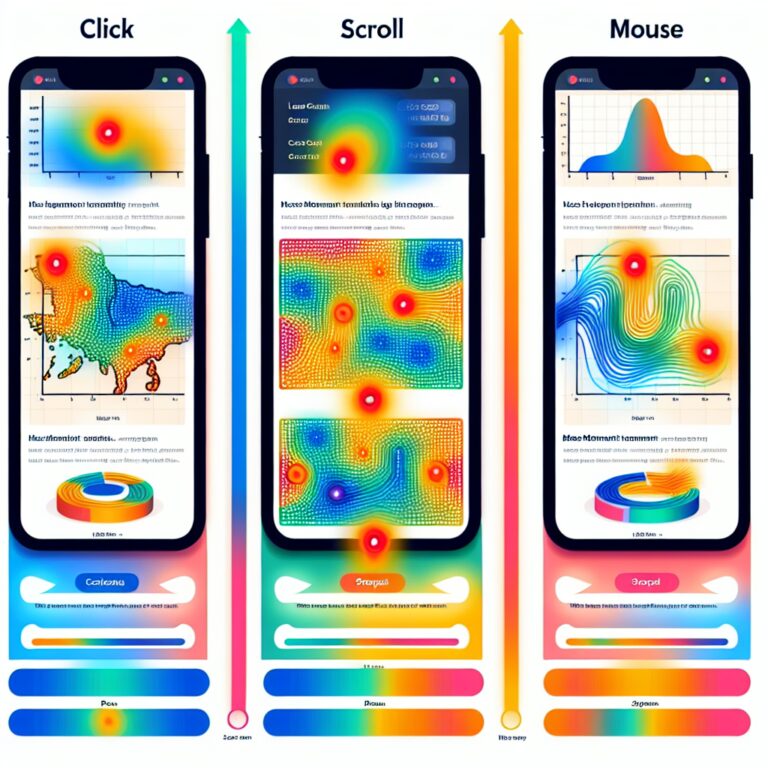How Heatmaps Can Reduce Cart Abandonment

I. Introduction
Cart abandonment is a critical challenge that e-commerce businesses face, occurring when potential customers add items to their cart but leave the site without completing the purchase. Addressing this phenomenon is vital, as it significantly impacts revenue and overall business performance. One effective tool for understanding and mitigating cart abandonment is heatmap analytics, which provides valuable insights into user behavior on your website.
For instance, tools like Plerdy offer AI-powered optimization to track user behavior, analyze clicks, and improve conversions through data-driven insights. This not only helps reduce bounce rates but also enhances user engagement and optimizes website elements across platforms like Shopify, WordPress, and Magento. 
II. Understanding Cart Abandonment
Statistics reveal that nearly 70% of online shopping carts are abandoned, a staggering figure that represents lost revenue for e-commerce sites. Common reasons behind cart abandonment include unexpected shipping costs, lengthy checkout processes, and concerns over payment security. The financial impact of this issue can be profound, with billions in potential sales slipping through the cracks, underscoring the need for effective solutions.
III. What are Heatmaps?
In the context of e-commerce, heatmaps are graphical representations that visualize user interactions, showcasing where visitors click, scroll, and hover on a web page. There are three main types of heatmaps: click heatmaps, which display areas of the page receiving the most clicks; scroll heatmaps, showing how far down the page users typically scroll; and movement heatmaps that track mouse movement. By collecting user interaction data, heatmaps provide a clear picture of how customers engage with various elements of a website.
IV. The Connection Between Heatmaps and Cart Abandonment
Heatmaps can be instrumental in identifying user behavior patterns that lead to cart abandonment. By analyzing abandoned cart data through heatmaps, businesses can uncover specific points in the user journey where drop-offs occur. Case studies reveal that many brands have successfully used heatmap tools to gain insights into customer preferences and behavior, leading to significant reductions in cart abandonment rates.
V. Implementing Heatmap Analytics
To leverage heatmaps effectively, it is essential to choose the right heatmap tool for your e-commerce website. Giving priority to Plerdy, which offers unique features and insights, is a wise choice for optimizing user experience. Once you’ve selected a tool, set up heatmaps to track key pages such as product pages and the checkout process, ensuring you capture critical interaction data to enhance user experience.
VI. Analyzing Heatmap Data to Reduce Cart Abandonment
Heatmap data analysis allows businesses to identify friction points in the customer journey that contribute to cart abandonment. By understanding where users engage most with product elements, businesses can pinpoint areas that may need redesign or optimization. Data-driven adjustments to website layout and design not only enhance user experience but also promote higher conversion rates.
VII. Actionable Strategies Based on Heatmap Insights
Improving product page design based on user interaction insights gathered from heatmaps can make a significant difference in retaining potential buyers. Streamlining the checkout process is another effective strategy, eliminating unnecessary steps that often lead to drop-off. Additionally, enhancing overall usability based on heatmap insights fosters a better user experience, encouraging customers to complete their purchases.
VIII. Measuring the Impact of Heatmap-Driven Changes
Establishing key performance indicators (KPIs) for cart abandonment and conversion rates is crucial for measuring the effectiveness of heatmap-driven changes. By monitoring user behavior and feedback after implementing design adjustments, businesses can assess the impact of their improvements. Continuous optimization is essential; by regularly analyzing heatmap data, e-commerce sites can adapt to changing customer needs and preferences.
IX. Conclusion
Heatmaps play a pivotal role in reducing cart abandonment by providing detailed insights into user behavior and interaction patterns. By utilizing heatmap analytics, e-commerce businesses can enhance their site performance and improve conversion rates. Understanding and responding to user behavior is vital for increasing customer satisfaction and achieving long-term success in the competitive e-commerce landscape. To explore further, consider learning more about Plerdy to leverage its full potential in optimizing your website’s success.





